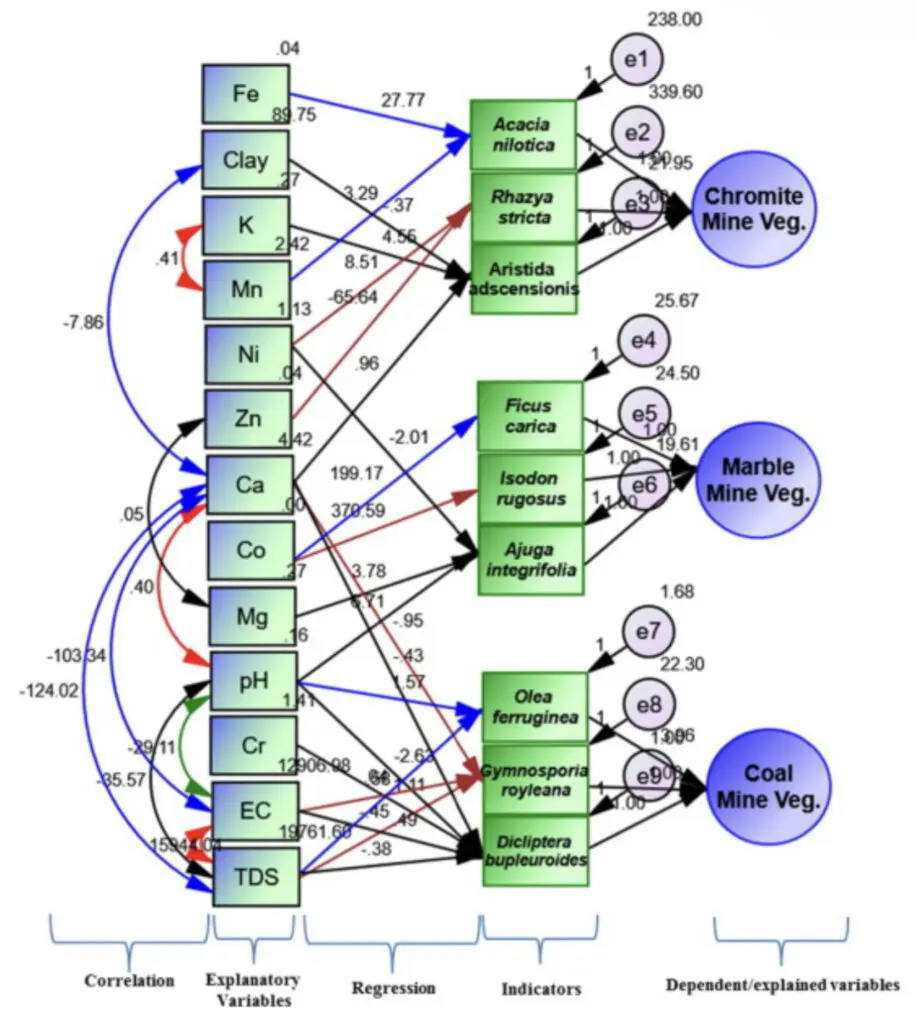The Weekly Reflektion 36/2023
There are many indicators that could be used to determine whether you have safe and efficient operations. If you know what you are looking for, you can build up a pretty good picture of how you are doing. However, if you cannot distinguish the relevant indicators, you may not have the right impression. When the indicators you are using confirm what you want to believe then complacency can set in, and you may be on the road to a serious incident or even a Major Accident.

Analyses of the three mineral mines vegetation each with a distinct plant indicator in relation to different environmental variables.
From Journal of Advanced Research, Volume 39, July 2022, Pages 119-223.
Preventing a Major Accident, do you know what you are looking for?
We have written several Reflektions on indicators and signals and their importance in ensuring you have a good overview of your operation. In our Reflektion week 50/2022 we highlighted the focus on Lost time Accidents (LTIs) prior to the Texas City Refinery explosion in March 2005 and how this helped to create an impression that safety was satisfactorydespite other signals that gave a contrary impression. In our Reflektion in week 17/2023 we showed how management can send a message that discourages good safety behaviours.
In the mining industry plants have been used as an indicator of whether certain rocks and ores may be present in an area. One of the most documented examples is Polycarpaea spirostylis, often called the Copper Plant. Copper in the soil stimulates the Copper Plants’ enzymes and enhances the photosynthesis process so that the plants thrive and gives the leaves a distinctive green colour. The prominence of Copper Plants and the colour in the leaves gave prospectors an indication of where copper ore may be found, for example near Silver Valley and Mt. Garnet in Queensland in Australia. Extensive research into soil composition and plant species in the Hindu Kush-Himalya range in Pakistan provided information on the accumulation of marble, coal, and chromite in different areas.
The relationship between the soil characteristics, the influence of these on certain plant species and the accumulation of marble, coal and chromite in the above figure is the result of an extensive research project. Samples are taken and analysed, relationships are studied to determine statistical significance and verifications are carried out to confirm, or reject, the hypotheses that are proposed. This is a systematic process with the objective of determining whether plant species are a reliable indicator of mining potential.
A systematic approach to developing indicators is just as important for assessing the safety performance of your organisation.
What variables do you have and that you can measure? Typical examples for mining are metal content, hydrogen potential (pH), and total dissolved solids (TDS).
How do these variables affect parameters that can easily be observed? Examples for mining are the prominence and characteristics for plant species and how they are affected by the soil variability.
What are you trying to achieve and how representative are the indicators you have? The examples for mining were related to the location of the mine. Originally these were observations and connections made by the early prospectors, now they are the result of systematic research.
One way of finding out what indicators could have warned you of a disaster is using hindsight in the inevitable investigation. Unfortunately, that’s too late for your particular disaster. Alternatively, you can use investigations and learning points from other disasters.
